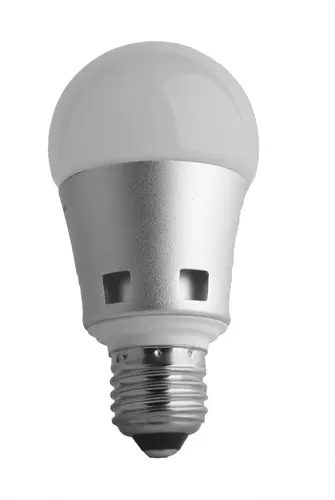The newest innovations in lighting technology were on display at Lightfair International, North America’s largest architectural and commercial trade lighting show, showing the latest developments in lighting.
An industry-wide emphasis on the switch to LED lighting systems was key at the event, according to LEDs Magazine, as companies were set on seizing the quickly-expanding technology to improve lighting in both the short- and long-term.
One introduction made at the event was the new Reveal brand of LED lamps from General Electric, which the company says are superior for rendering color and revealing textures while still resembling legacy bulbs. Prior LED lights from GE have featured vertical extensions over portions of the bulb’s globe.
GE’s newest brand of bulb was designed based on consumer research, according to GE’s chief innovation manager, Tom Boyle.
“At the forefront of all of our engineering is consumer research, and we heard across the board that the size and the shape of an LED bulb is very important to shoppers,” he said.
Higher efficiency, less heat
As LED components and lamp designs continue to evolve, products can retain a traditional look, resembling traditional light bulbs, while saving heat and reducing energy usage.
Another valuable innovation emphasized at the trade show was that of Philips’ award-winning Hue lighting systems, which can produce almost any color of light through control from a smartphone or tablet app.
The company announced a new lamp focused on the Hue technology, due for release in the fall, to show its commitment to the technology.
Other companies also demonstrated their control of tunable lighting, such as dynamic-color and tunable-white products from Acuity, according to the news source.
Colored lighting can assist its users, making them more well-rested. Eyes respond differently to different colors of light, according to New Scientist Magazine. Blue light found in daylight prevents the body from creating melatonin, fighting sleepiness, but is found in many florescent light bulbs used at homes during the night. Red light, found in the evening, assists the body to sleep better. By using tunable lighting to change colors during the day, it’s possible to improve sleep cycles.
Lighting networks gain prominence
Tunable lighting reflects upon a newfound need for lighting networks, and the show’s featured ranged from single lamps to systems able to control entire buildings. Sylvania showed additions to its lamps and fixtures with wireless networks that use ZigBee networks, while Acuity revealed systems that run over both Wi-Fi and Ethernet networks.
Other companies including Cree and Philips have also partnered with control companies to further improve their lighting systems, many of which support Lutron lighting control networks over both wired and wireless connections.
General Electric also revealed its use of new wireless network technology in Los Angeles, which is installing LED streetlamps to replace less efficient ones, to the point where each individual light will be recognized by their network. Other companies, including Philips, have said similar lighting network technology will continue to become more popular as cities continue to upgrade their technologies.





